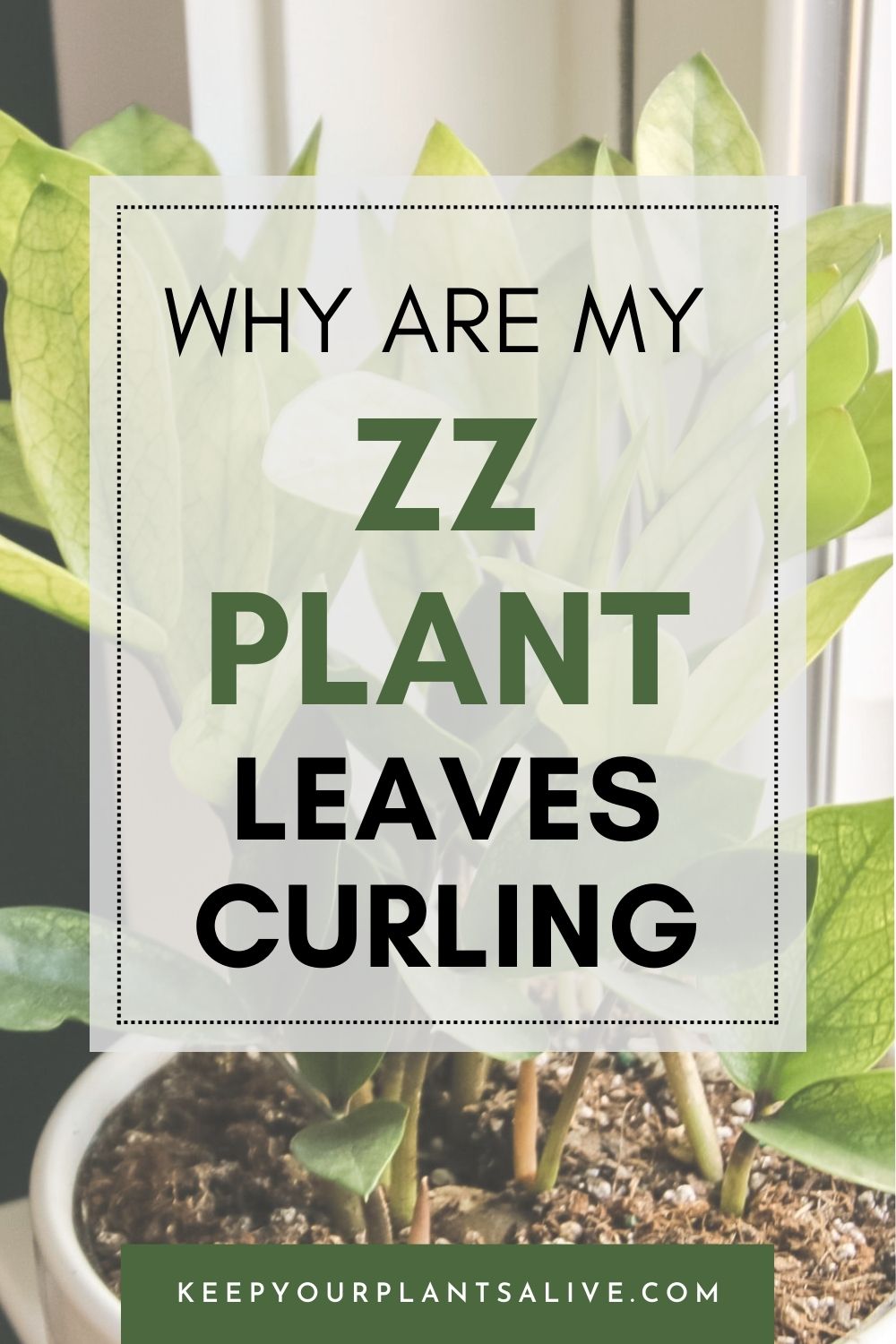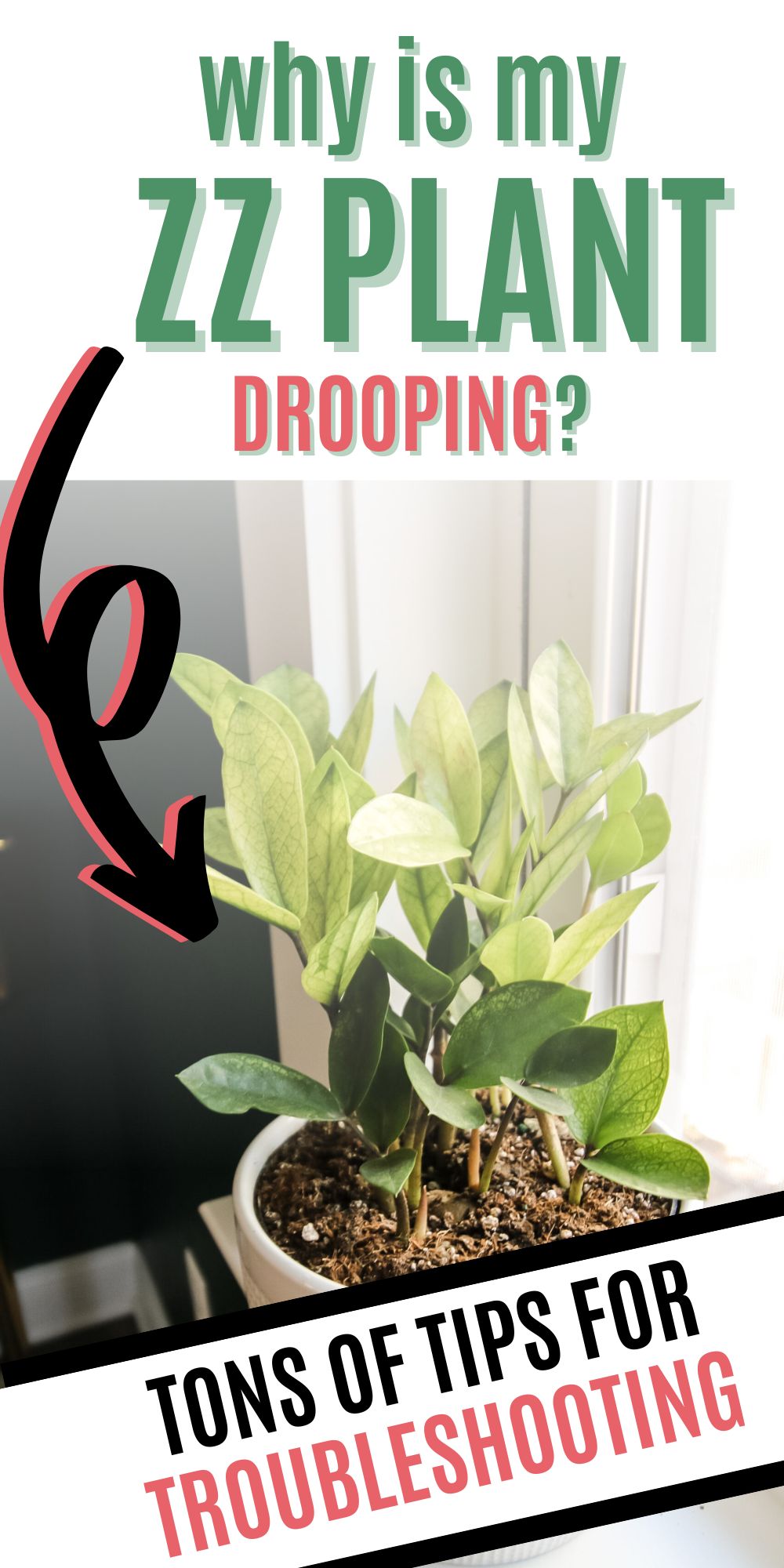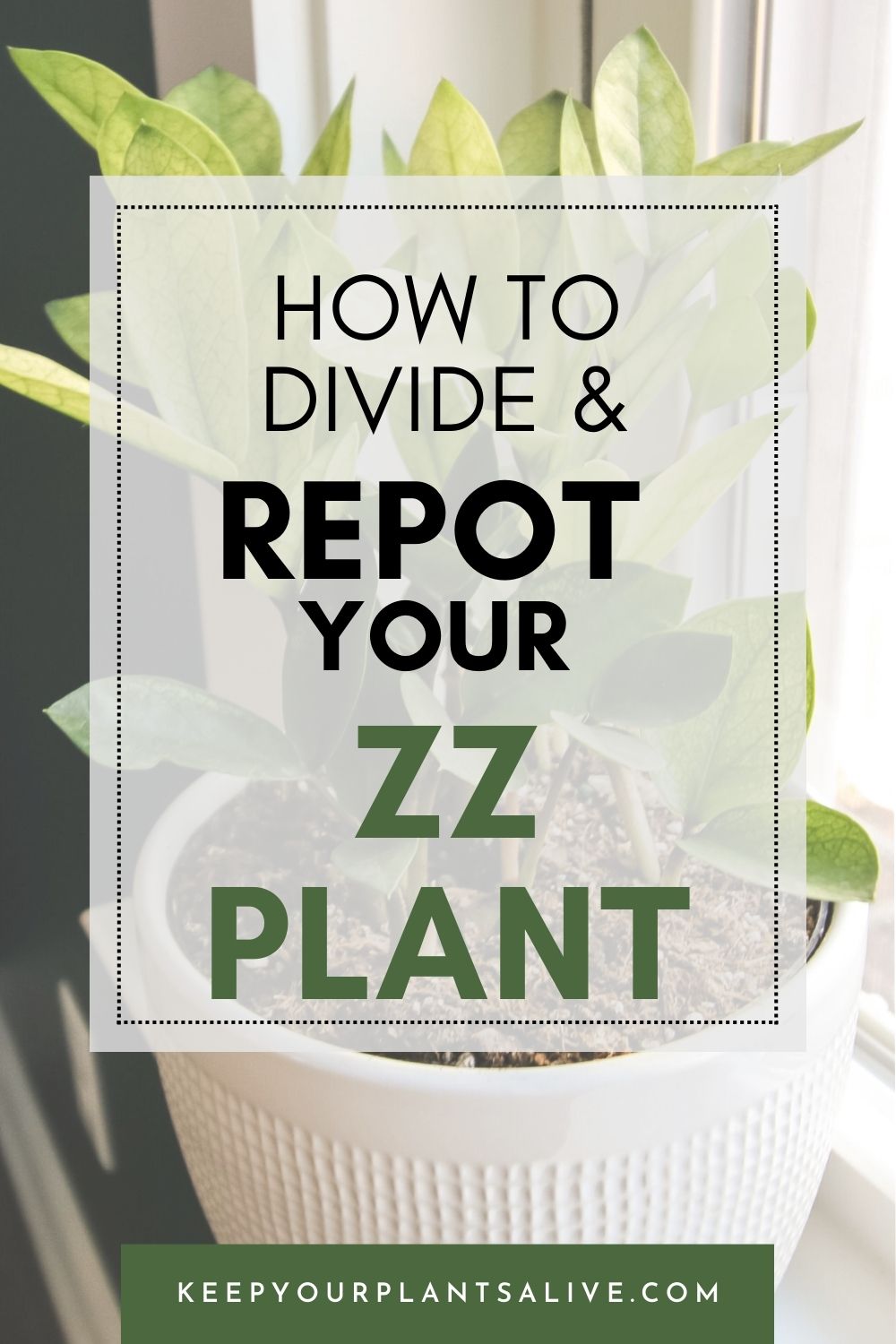Wondering if your ZZ plant can go outdoors? Here's what you need to know about if ZZ plants can live outside and the factors to keep in mind when putting your ZZ Plant outside!
The ZZ plant, also known as a Zanzibar gem, is a long-lived aroid that grows natively in East tropical Africa, especially in Zimbabwe and Kenya.
Because these locations come hand-in-hand with scorching temperatures and sandy and rocky grounds, the ZZ has adjusted to arid and semi-arid areas surrounded by rocky slopes.
Moreover, it had to adapt to drought over time by forming rhizomes, bulbs under the soil, that retain water.
Typically, this plant is kept indoors - in fact, it’s one of the most popular house plants due to its low maintenance!
However, its glossy green leaves may be just what your patio needs to give it that extra kick of lushness, leaving you wondering whether it’s possible to keep a ZZ plant outdoors.
The short answer - yes.
But you need to pay mind to ZZ plant outdoor growing conditions since you’ll need to do your best to mimic its natural habitat.
Although this may sound daunting at first, it’s no issue a green thumb like yourself can’t fix! So, let’s discover how can ZZ plants live outside.
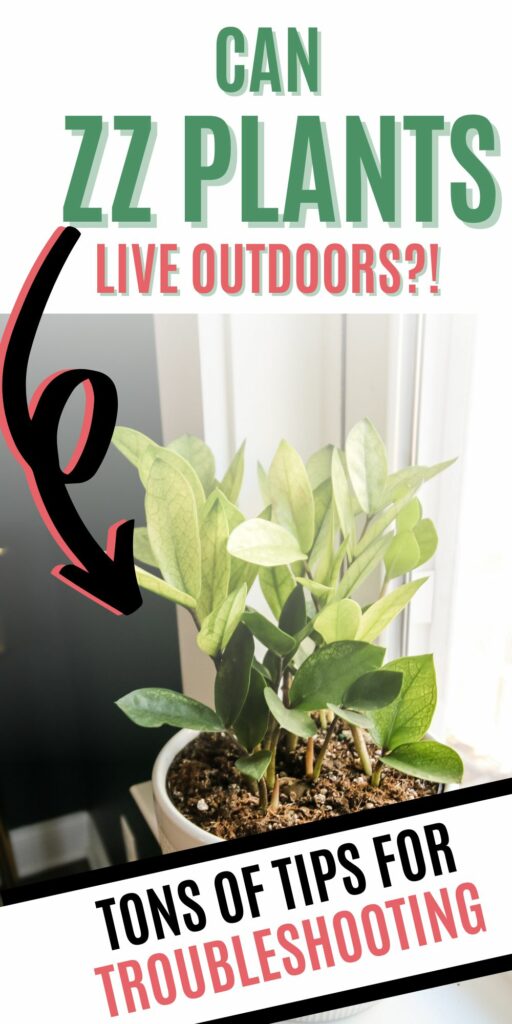
Want more ZZ plant topics?
- Raven ZZ plant care guide
- The Best ZZ Plant Soil
- Why is my ZZ plant getting yellow leaves?
- Why is my ZZ plant not growing?
- Why is my ZZ plant turning brown?
Free printable ZZ plant care guide
Join the (free!) KeepYourPlantsAlive+ community to access this exclusive printable plant care guide! Once you sign up, you can right click & save the JPG care guide. Or keep scrolling for more!
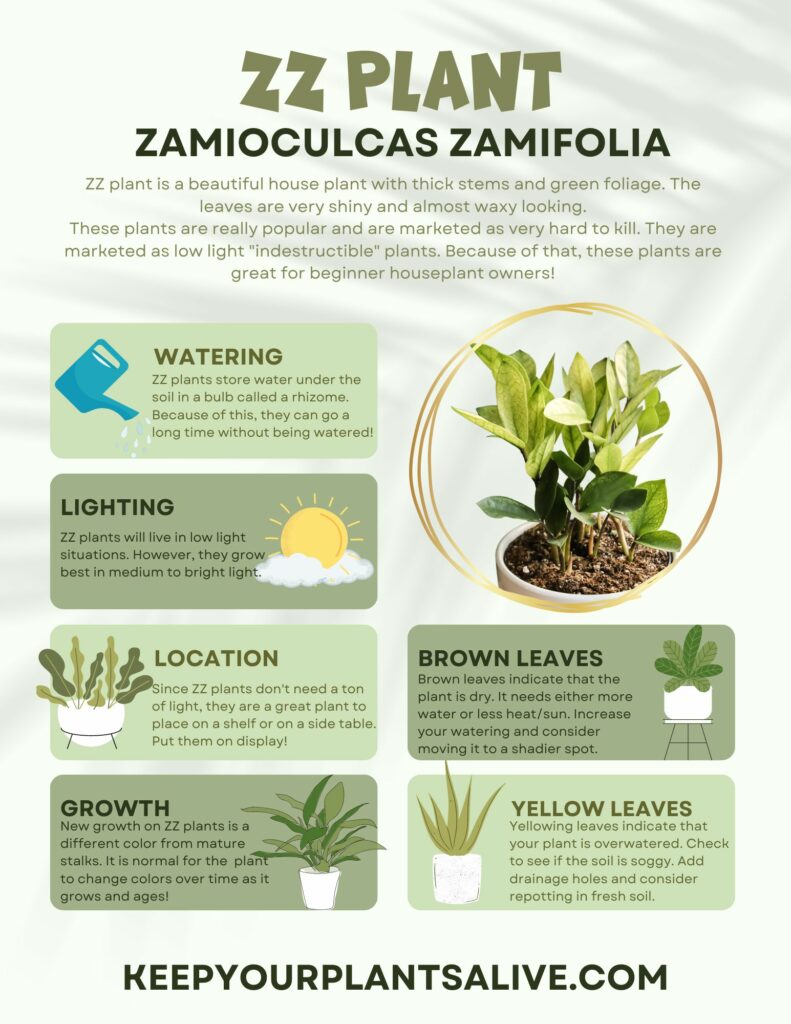
How to keep ZZ plants outdoors
As you know, we gardeners want to keep our plants indoors because we have more control over the growing environment, meaning that we can control and adjust the conditions as we see fit.
But, it’s only natural that you start considering growing ZZ plants outdoors.
If you don’t live in Zanzibar or anywhere in East Africa, for that matter, of course, this is going to be a bit challenging, but it’s nothing you can’t handle! Let’s take a look into the natural habitat of the ZZ plant.
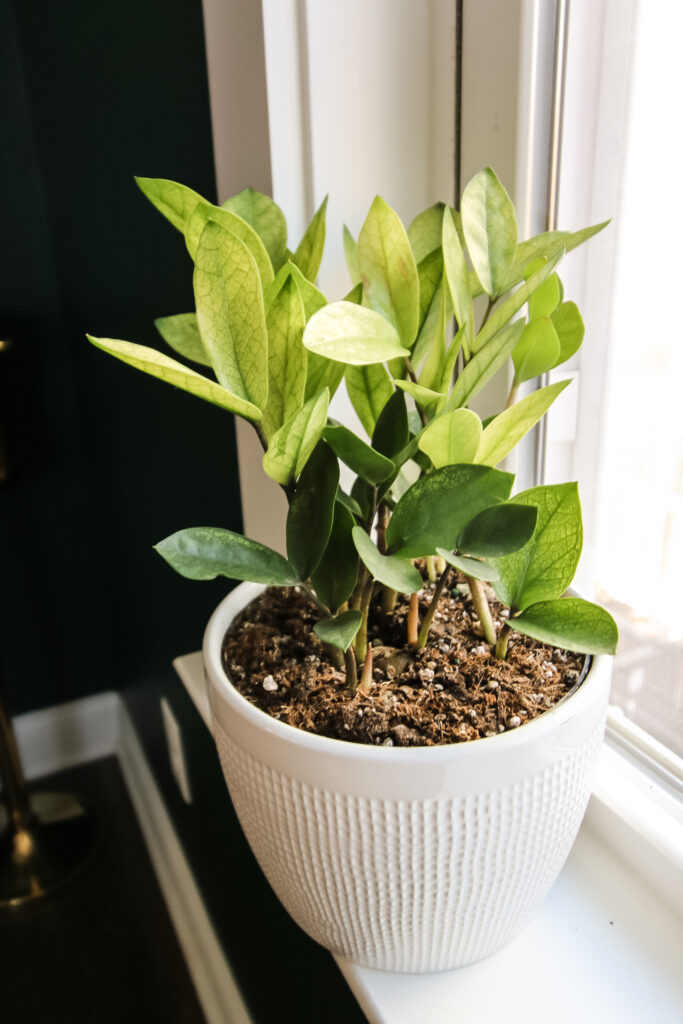
ZZ plant natural habitat
Ideal growing zones for Zanzibar gem are USA zone 9 and 10, with minimum winter temperatures of 20-40 °F (-6 - 4°C). Zones 1-8 are also suitable for growing, but not during the winter.
With that in mind, keeping your ZZ plant outdoors year-round is only recommended if you live in the Deep South.
To further clarify, it is good to know that the ideal ZZ plant outdoor temperature is in the range of 65-90°F (18-32 °C), and the preferable sunlight is indirect and moderate.
Additionally, the humidity should be maintained at a level of 40-50%.
Finally, the ideal soil mixture is a cactus mix enriched with perlite and sand - a combination that perfectly simulates the natural habitat soil of the ZZ plant.
Remember that these are the best conditions for growing a ZZ plant outdoors, meaning that it’s not easily achievable, but slight alterations from the standard will make you a solid!
Let’s dive deeper and see what to focus on when keeping a ZZ plant outdoors.

Climate
Zones that best suit your chosen plant are 9-10, especially 9b, with minimum temperatures of 25°F to 40°F (-6 - 4 °C).
In contrast, the maximum constant temperature your plant can withstand for an extended period is 90°F (32 °C). Therefore, try to place the plant in the shade during summer and do not forget to water it.
As you know, winter and plants are not the ideal pairing, which also applies to ZZ plants. When temperatures drop below 40°F (4 °C), bring the plant back inside or protect it from the cold.
Sunlight
Because it’s a native African plant, you may believe that the ZZ plant adores direct sunlight, but that’s where you’re wrong!
When planting a ZZ plant outdoors, you need to provide a cool, shady area, such as under the porch, the gazebo in your yard, or the patio, as a striking decoration piece.
During the summer, provide your plant with indirect moderate light to prevent scorching.
If you notice yellowing, it is likely from too much exposure to the sun, so you’ll need to move it around.
While uncommon, it is still possible that your plant doesn't get enough sun, especially in areas with few sunny days.
The first sign is that the plant becomes leggy; the branches lengthen, and the leaves thin out. If you notice this, then the ZZ needs some love from the sun.
Soil
If you take a glance at East Africa, you’ll quickly notice that its environments are either sandy or rocky - or a mix of both!
This tells us that ZZ plants are accustomed to soils that don’t prefer too much water and dry out quickly.
In gardening terms, ZZ plants outdoors require well-draining soil that doesn’t retain moisture. Try to make your plant feel like it lives in its native place.
The best way to do that is by adding perlite and sand to the potting mix to prevent water retention and compaction. When in doubt, always choose good cactus mix soil.
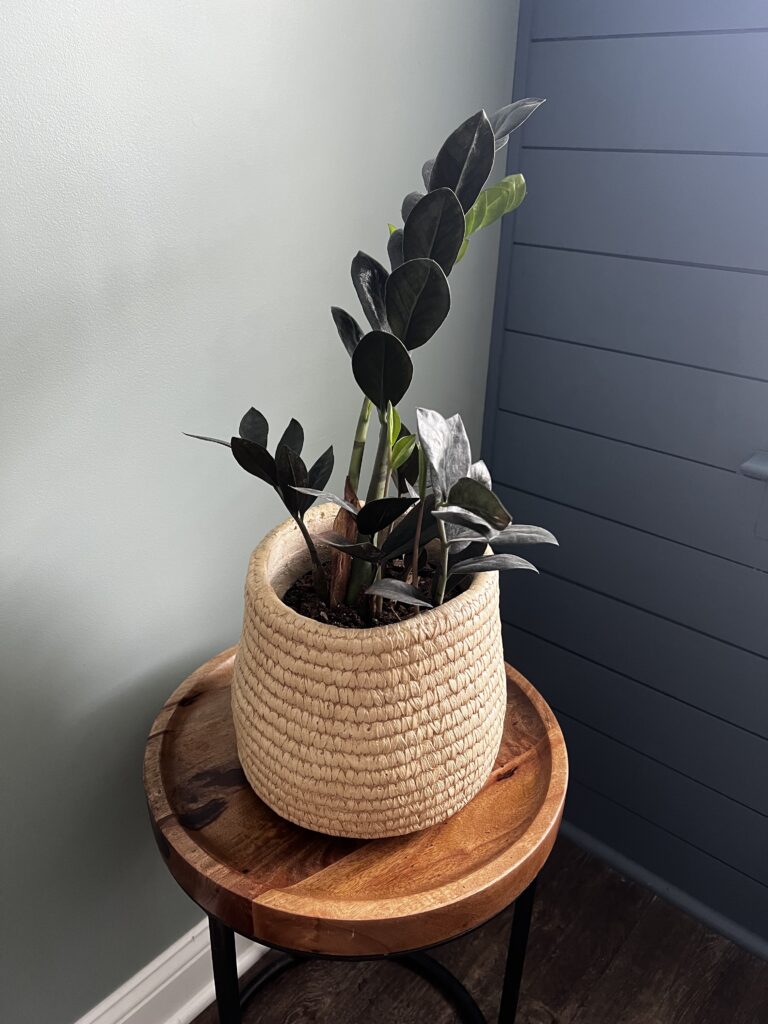
Watering
Evaporation is significantly more noticeable if you keep your plant outside. This results in the need for more frequent watering. But understand, your plant will show you when it needs water.
When it comes to the ZZ, however, you need to be careful. Although it’s accustomed to drought-like conditions, when growing ZZ plants outside, you need to pay mind to how much water you’re supplying it with.
As a rule of thumb, you should water it when the soil is completely dry (you can check this by adding your finger 3 inches deep in the soil), but never leave it wet or soggy.
Moreover, keeping it in a container is best because controlling the ground’s moisture is significantly more difficult.
One last thing to watch out for is water retention at the bottom which is strictly undesirable as it leads to root rot.
If using a decorative pot, always pour off excess water or try to choose a pot with drainage holes, so that rain or other water doesn't flood the pot.
Pests
The ZZ plant is considered to be hardly susceptible to pests. But if you keep it outside, the chances of infection are more significant.
The most common ones that attack ZZ plants are:
- Mealybugs (softy, white, hairy bugs);
- Spider mites (reddish miniature bugs);
- Fungus gnats (tiny flies with brown color);
- Aphids (soft-body transparent insects).
There are several ways to deal with them:
- The well-known soap solution;
- Neem oil;
- Stick traps for flying insects;
- Spraying with hydrogen peroxide;
- Sprinkling cinnamon on the soil.
Periodically you can also shower the plant, thus physically removing some of the pests. Just be careful to do it in the evening or in the morning on summer days, in order not to cause increased evaporation or freezing if it's colder.
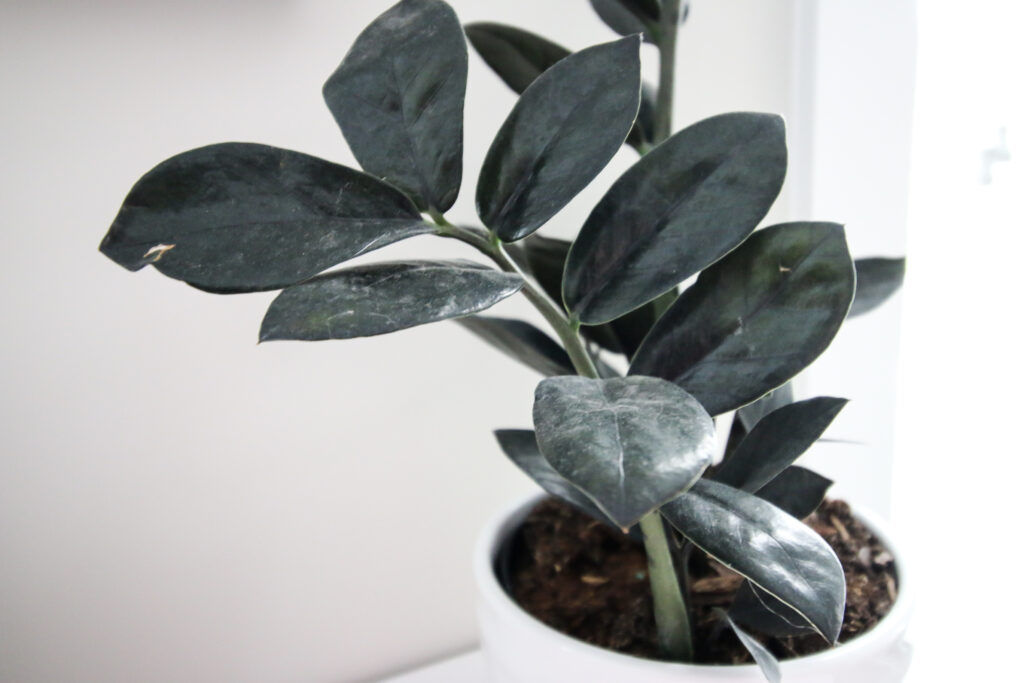
A simple guide to growing your ZZ plant outside
Here are some factors to consider when keeping your ZZ plant outdoors.
Choose the right location
Reserve a place for your ZZ under the eaves of your house to save it from sunburn.
Put it in a prominent place to remind you to check it for insects or to check if it needs watering.
During the cooler months, consider moving it into a greenhouse or indoor. This is a good idea not only for the ZZ plant but also for your other plants.
Fertilization
Feeding too often is not recommended, especially when keeping ZZ plants outdoors. The suggestions remain the same for indoors, just a bit scaled-down: fertilization once a year, in the spring/summer growing season.
Follow package instructions for proper fertilization ratio.
Pruning
Schedule pruning every 6 months to maintain the excellent appearance and health of your ZZ plant.
You can do extra pruning if you notice some of the following changes: damaged or yellowed parts, parts infected by pests, or if the ZZ plant becomes too large or bushy.
Make sure you have chosen the right size and shape of the pot if your plant often shows overgrowth.
Lastly, it is essential to mention that you should constantly prune with a well-sterilized blade; you should put cinnamon on the place where you cut. Finally, wash your hands and sterilize the blade.
Protect from frost
When growing ZZ plants outdoors In winter, you have 2 options: bring the plant back inside or move it to a greenhouse.
Observing and adjusting
Check your plant once a week to ensure it is well-watered, free of pests, and in a suitable location. Prevent unwanted outcomes!
Any more questions about your ZZ plant?
Thanks for reading!


Hey there, I'm Morgan, a houseplant enthusiast from sunny Charleston, South Carolina. Growing up surrounded by my mom's lush orchids and African violets, I discovered the magic of bringing nature indoors. Thanks to the pandemic, I delved deeper into houseplants, discovering their power to uplift moods and transform spaces. I'm here to spill all my secrets, helping you pick the perfect houseplant - and make it happy. Let's keep your plants alive, together! 😊


